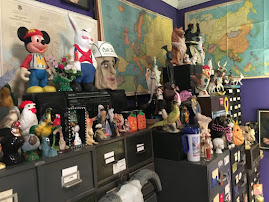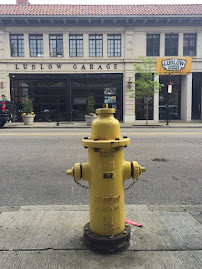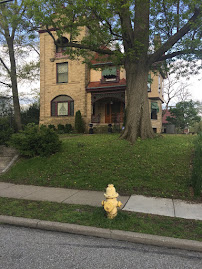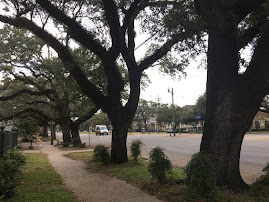
Rowing on the Menominee (photos by VAL)
Dear George,
My maternal grandfather Guy Cramer retired and moved to Menominee from Omaha in the late 1930’s. He lived down the street from us, but in 1941 he built a summer cottage on the Menominee River, about a mile outside the city limits and a half-mile from the cemetery and the city dump. Our family, probably for financial reasons, moved to the river house in 1946 when my dad came back from the Pacific after the war. I was 9, Steven was 5, Peter was 1, and Vicki was in the works but yet to be born. We were the first people to live on Riverside Boulevard (a two-lane gravel road which, in fact, had no resemblance to a boulevard).
Our front yard was right on the banks of the Menominee River, one of the major rivers of northern Michigan. The Menominee, which makes up a big chunk of the state boundary line between the U.P. and northeastern Wisconsin, begins at the junction of the Brule and Michigamme Rivers near Iron Mountain and flows 118 miles to empty into Green Bay at the twin cities of Menominee and Marinette, Wisconsin. “Menominee” in Algonquian means “in the place of wild rice”, and both the river and our hometown are named after the Menominee Indian tribe who lived in the area and subsisted on wild rice.
Our house was about 3.5 miles west of the river’s mouth and was located on a bend at the river’s widest point. I’d guess the channel there was about two-tenths of a mile wide, about the same as the Mississippi as it flows past New Orleans or the Ohio River at Cincinnati. The view from our property was striking. The river view extended a long way to the east, the water was deep blue, and the land was thickly forested in every direction. From our front lawn we could see Riverside Cemetery in the distance. Directly across from us was Pig Island, named by my parents after the wild pigs which we would see grazing on its banks. At the eastern tip of Pig Island was a deteriorated log structure which had been used in the logging industry at the turn of the last century, and nearby out in the middle of the river was a man-made island and cabin likewise used by loggers. Menominee was the world’s largest lumber port in the 1890’s and early 1900’s, and the Menominee River was the conduit by which logs were floated from many miles away to the sawmills in town.

Swimming was our major summer avocation. Though we lived on the river, many of our family friends had homes on the shores of Green Bay. There was a long-running, tongue-in-check debate among the kids about the relative merits of the river and the bay. We called ourselves “The River Rats” and labeled our compatriots “The Bay Mice”. Green Bay had good beaches, a perfect sandy bottom, and occasional white-capped waves, but, as an offshoot of Lake Michigan, it was much cooler and sufficiently shallow that you had to walk a long way out to get to reach an adequate swimming depth. The river’s best feature was the warmth of the water. Green Bay raised goose pimples on one’s body and required a certain fearlessness on entry, especially as the water approached one’s swimsuit, but the river felt more like a lukewarm bath. Unfortunately, the river bottom was squishy, sprouted fields of underwater weeds, and had many broken sticks on its bed that required that careful walking.
Swimming and partying on the shore played a big part in our family’s social life. The O’Haras and their kids – Terry, Michael Dennis, Kevin, and Sean – came over regularly, as did many other family friends. The adults sat on the bank and drank whiskey while we swam around the raft, played tag in the water, tossed a tennis ball, or tipped the rowboat upside down to hide underneath and breathe from its air bubble. My mother always sat on the lawn and watched with an eagle eye while we were swimming. We had to wait until an hour after eating, have life preservers available on the shore, and swim with at least one partner. Though we fantasized when swimming in Green Bay about being attacked by giant muskies or sturgeons, there were real-life creatures lurking around in the river. In particular, we would often see turtles swimming about, their noses poking up just above the water’s surface. We decided that these probably included giant snapping turtles and that we might be at risk of losing a toe or two. One day Steven shot a large turtle with his bow and arrow and tugged it ashore where he wound up disposing of it with the family .22 rifle.
Crayfish and minnows populated the water’s edge, and we would capture them in mason jars or collect the detached claws which lay on the sand. The river bed at the shoreline contained a heavy reddish clay, which we would dig up and use to make bowls or sculpted objects. Dragonflies skimmed across the surface of the water, and speedy waterbugs zigged and zagged every which way. On the river’s bank cicada-like insects would completely shed their outer skins each August, we would collect their ghost-like shells. The least attractive of the river’s inhabitants were the bloodsuckers. When we finished swimming for the day, we would often find a black slimy bloodsucker on an ankle or lodged between our toes. If they’d been there long enough, they would have penetrated our skin and become bloated with ingested blood. We checked ourselves carefully when leaving the water, and we pulled off and threw the wriggling bloodsuckers into the nearby weeds.
We had a finely crafted green wooden rowboat with a one horsepower motor which we used for expeditions. The motor only worked when my dad had taken it to Herb Beyersdorf for tuning up, so we more often relied on rowing. We would travel east along the river shore, past our neighbors, the Orths and the Meads. We’d search the lagoon for artifacts that might have floated down the river, then make a stop at Brewery Park, a private park built for employees of the M&M beer factory. West of our property, Mr. Shaver had built a summer cottage. Steve and I told “the babes”, Peter and Vicki, that there was a pool of quicksand on the river bottom between our house and Shaver’s and that we would be sucked under the water if we stepped in it. I doubt that Peter or Vicki ever believed this, but we all got a little nervous when we walked in the water toward Mr. Shaver’s, even Steve and myself.
My dad took us on rowboat trips to the Channel, which flowed between Pig Island and its neighboring island to the west. The channel was hidden from the civilized world and full of mystery. It usually had no wind and was the most silent place I’d ever been. Water lilies covered the surface, dragonflies were plentiful, and there were deadheads everywhere below the water, which made rowing difficult and operating our motor prohibitive. If we were lucky, we would see Great Blue Herons in the channel, as well as a variety of other water birds. Sometimes a pair of elderly men would be fishing for perch and bass in their rowboat.
At least once each summer, my mom would pack a picnic lunch, and my parents would take us on a boating expedition to Indian Island, about a half-mile up the river. This was a small island west of Lou Reed’s house. We called it Indian Island for no reason that I can recall. The island was about thirty yards in diameter, and one side had a steep sandy bank which we would scamper up and down. Ice fisherman stored their fishing shanties on Indian Island in the off-season. Peter, Vicki, Steve, and I would go in and out of them, pretending that we were pirates storing our booty and that Indian Island was our treasure cove.
Our family life during these years revolved around the river, and it offered a rich arena for adventure, fun, and the complicated process of growing up. I have some more to say about this, but I’m going to save it for another occasion.
Love,
Dave























































































































































